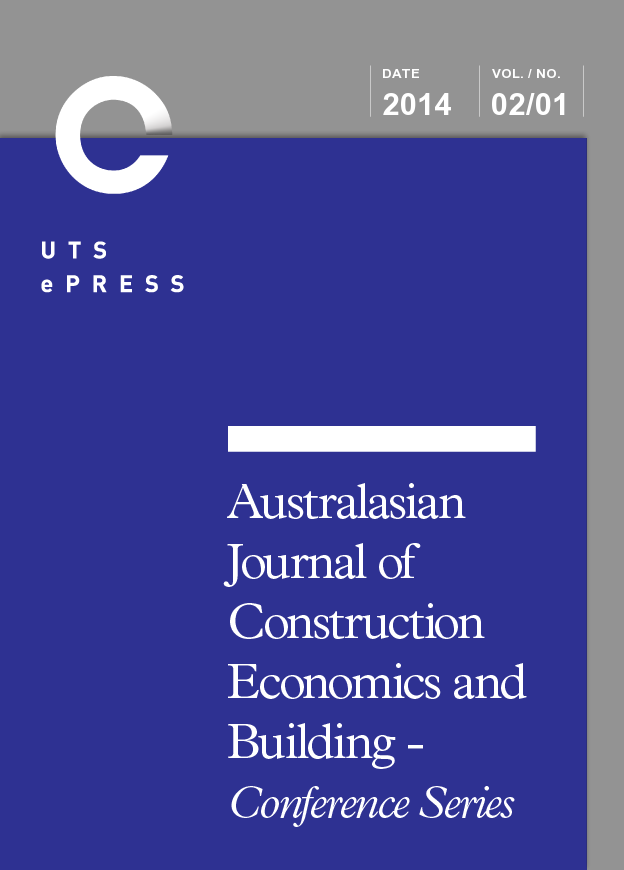Discrete-Event Simulation versus Constrained Graphic Modelling of Construction Processes
Main Article Content
Abstract
Effective construction project planning and control requires the development of a model of the project’s construction processes. The Critical Path Method (CPM) is the most popular project modelling method in construction since it is relatively simple to use and reasonably versatile in terms of the range of processes it can represent. Several other modelling techniques have been developed over the years, each with their own advantages and disadvantages. Linear scheduling, for example, has been designed to provide highly insightful visual representations of a construction process, but unfortunately is largely incapable of representing non-repetitive construction work. Discrete-event simulation is generally agreed to be the most versatile of all modelling methods, but it lacks the simplicity in use of CPM and so has not been widely adopted in construction. A new graphical constraint-based method of modelling construction processes, Foresight, has been developed with the goal of offering the simplicity in use of CPM, the visual insight of linear scheduling, and the versatility of simulation. Earlier work has demonstrated the modelling versatility of Foresight. As part of a continuing study, this paper focuses on a comparison of the Foresight approach with discrete-event construction simulation methods, specifically Stroboscope (a derivative of CYCLONE). Foresight is shown to outperform Stroboscope in terms of the simplicity of the resultant models for a series of case studies involving a number of variants of an earthmoving operation and of a sewer tunnelling operation. A qualitative comparison of the two approaches also highlights the superior visual insight provided by Foresight over conventional simulation, an attribute essential to both the effective verification and optimization of a model.
Article Details
Section
Authors who publish with this journal agree to the following terms:
a) Authors retain copyright and grant the journal right of first publication with the work simultaneously licensed under a Creative Commons Attribution License that allows others to share and adapt the work with an acknowledgement of the work's authorship and initial publication in this journal.
b) Authors are able to enter into separate, additional contractual arrangements for the non-exclusive distribution of the journal's published version of the work (e.g., post it to an institutional repository or publish it in a book), with an acknowledgement of its initial publication in this journal.
c) Authors are permitted and encouraged to post their work online (e.g., in institutional repositories or on their website) prior to and during the submission process, as it can lead to productive exchanges, as well as earlier and greater citation of published work (See The Effect of Open Access). Where authors include such a work in an institutional repository or on their website (ie. a copy of a work which has been published in a UTS ePRESS journal, or a pre-print or post-print version of that work), we request that they include a statement that acknowledges the UTS ePRESS publication including the name of the journal, the volume number and a web-link to the journal item.
d) Authors should be aware that the Creative Commons Attribution (CC-BY) License permits readers to share (copy and redistribute the work in any medium or format) and adapt (remix, transform, and build upon the work) for any purpose, even commercially, provided they also give appropriate credit to the work, provide a link to the license, and indicate if changes were made. They may do these things in any reasonable manner, but not in any way that suggests you or your publisher endorses their use.
